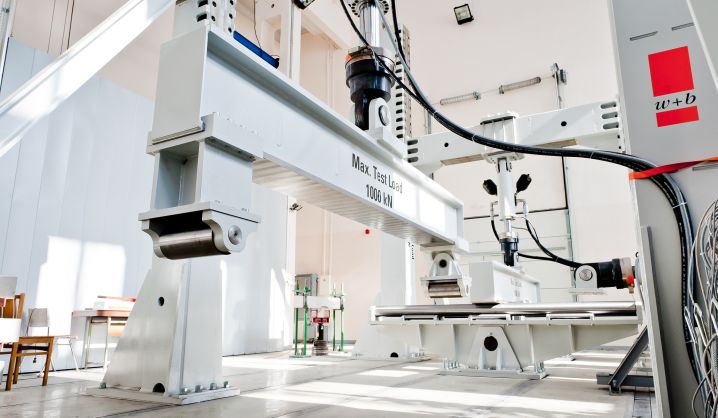- Programmes in English 2026/2027
- Admission 2026/2027 Scholarships
- For exchange students
- Free Movers
- Transfer studies
- Erasmus+ studies and traineeships
- Mentor programme
- Student testimonials
- Accommodation
- Career Services
- Medical Care
- Immigration Regulations
- Leisure and Student Activities
- Useful information
- Mental and spiritual support
- Representatives Abroad
- Contacts

2015-04-27
VGTU innovation will reduce the costs of concrete almost by half
The researchers of Vilnius Gediminas Technical University (VGTU) developed an innovation, which is rushing into the Lithuanian construction sector. They put plastic inserts, resembling geometric cubes and forming voids, into the slabs of a building. The plastic inserts are much cheaper and facilitate the structures, reinforce sound insulation, reduce costs of materials and work. The technology can reduce the amount of concrete in construction even by forty percent, according to the latest calculations.
The innovation, patented by the team of scientists of the Faculty of Civil Engineering, contributes to the solution of ecological problems: by reducing the amount of the concrete, they also reduce the amount of its main component – the cement. The experiments proved that cement industry produces even five per cent of carbon dioxide (CO2) worldwide. Thus, the production of concrete would also reduce the emission of CO2.
"The development and testing of the inserts started, while collaborating with the company, interested in the practical implementation of this innovation. We carried out various experiments and application research, prepared special methodology of calculation for designers. We planned the production of the inserts from secondary raw materials – second hand plastic, collected in Lithuania and specially prefabricated. Therefore, waste will be "preserved" on the construction sites instead of the dumps", - said Prof. Dr. Juozas Valivonis, Head of the Department of Reinforced Concrete and Masonry Structures of the Faculty of Civil Engineering at VGTU.
The plastic inserts, created by the researchers in Lithuania, from the similar products, produced elsewhere in the world, differ in their form – the form is close to the cube, with sets for attachment the reinforcement elements, and with special grooves for prevention the emergence of air voids in the concrete, next to the insert. The inserts are larger, thus, they save more building materials. The tests, carried out by the scientists of VGTU Civil Engineering Research Centre showed that plastic inserts in the concrete slabs do not alter their mechanical characteristics, therefore, they can use the inserts in the construction industry. At the Mobile Applications laboratory, the researchers tested thirty different slabs, changing the number of inserts and layouts.
There are two parts of the insert, thus, no big labour costs or long preparation is necessary for their assemblage. Due to the form characteristics, they can simply pile the inserts on each other and save space during storage, as well as easily transport them to the construction site. Slabs with inserts can be used for setting up building‘s overlays or reinforced concrete walls.












